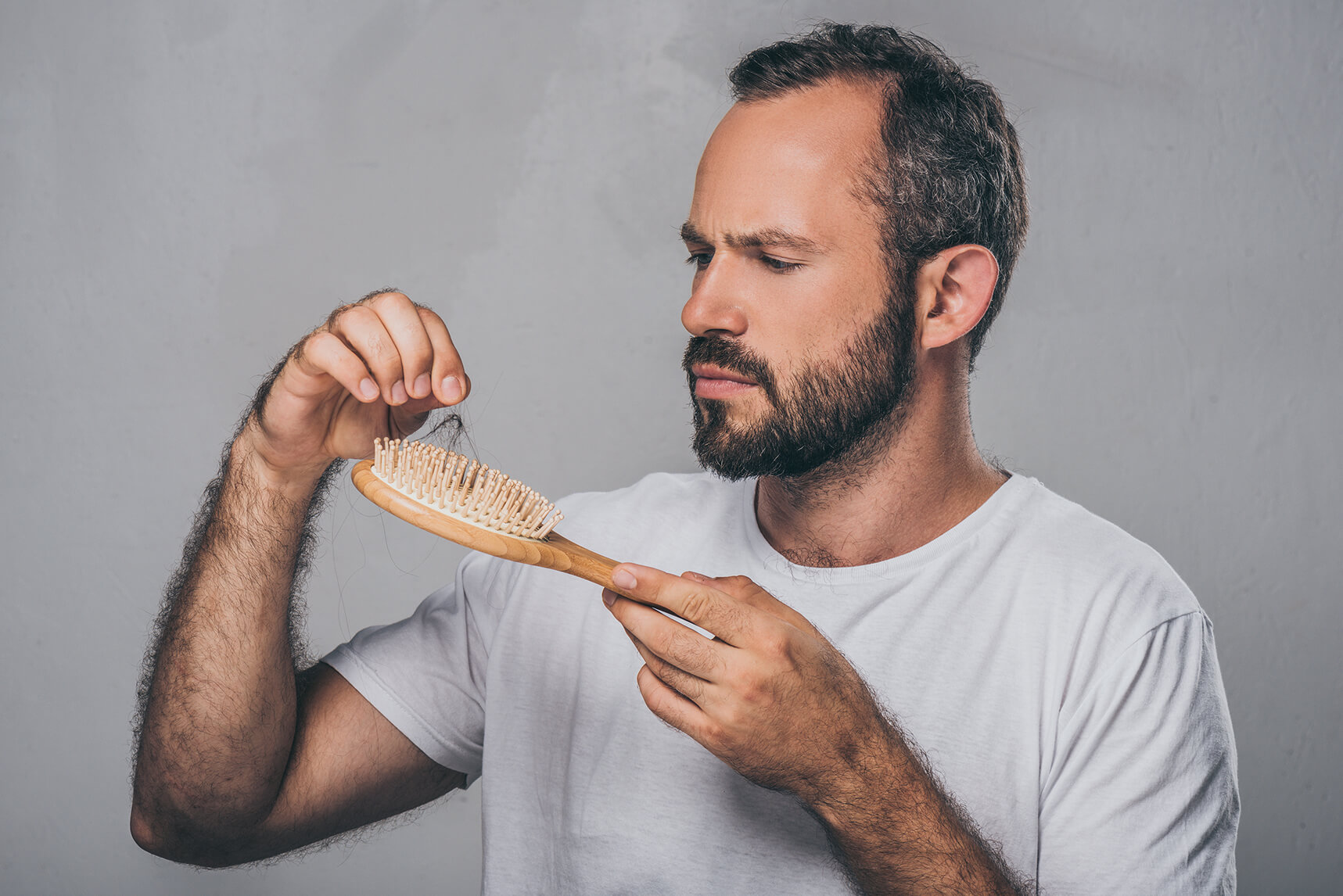Does the build-up of hair on your hairbrush worry you? Maybe it’s the rather large clump of hair you found when cleaning the shower that’s making you feel concerned. You’re not alone. Hair shedding – which can refer to a little or lots of hair falling out – can be distressing.
Shedding hair in small amounts is normal. That large clump of hair you found in the shower is probably just the build-up of normal hair loss from the past few days.
On the other hand, suddenly shedding hair in large bursts or realizing that you’ve been losing an increasing amount of hair isn’t typical. Losing a lot of hair in the shower or lots of hair falling out when you brush your hair could be a sign of a serious issue. This type of hair shedding is usually a sign of hair loss – but fortunately, most types of hair loss can be treated.
Normal vs. abnormal hair loss
According to a study published in the Dermatologic Clinics journal, people tend to lose between 50 and 150 hairs every day. This type of hair shedding produces normal hair loss in the shower, while you move around in your sleep, and while you brush or style your hair. Some hair even falls out while you go about your daily routine. All of this hair is lost naturally as part of the hair growth cycle.
The hair growth cycle involves several phases. Your hair isn’t just perpetually growing – instead, the hair follicles that produce each strand of hair also shrink, rest, and expel each hair strand over time. After the hair is shed – which is known as the exogen phase – a new strand of hair begins to grow.
Lots of hair falling out typically means that something’s affecting your hair follicles and the hair growth cycle. Unfortunately, excessive shedding is also a sign of hair loss. Determining what’s affecting your hair follicles and why you’re experiencing this problem is essential if you want to stop hair loss in its tracks.
Why has my hair suddenly started falling out?
Excessive hair loss can occur for a variety of reasons. Is your hair falling out in bursts? If so, a study in the Journal of Drugs in Dermatology says that stress could be one of the reasons for your hair loss. Losing your job, a hospitalized family member, or a serious accident could all cause this type of hair loss, which is known as telogen effluvium.
This isn’t the only reason for sudden hair loss, though. According to a study in the Journal of Cosmetics, Dermatological Sciences, and Applications, hair loss could also be the side effect of something you’re consuming, like a medication or a dietary supplement.
Hair loss can even be caused by your body’s immune system. This condition, known as alopecia areata, might affect more than the hair on your head, though. Circular patches of hair loss or hair loss affecting multiple parts of the face or body are all signs of alopecia areata.
What about hair that’s been falling out gradually?
Gradual hair loss can also occur for a variety of reasons. For example, something as simple as bad haircare or an unhealthy diet could cause this problem.
Don’t worry if you like eating fries, chips, or chocolate every now and then, though. Nutrition-related hair loss is only likely to occur if you’re not getting enough vitamins and minerals. People with malabsorption disorders, like Crohn’s disease or cystic fibrosis, and people who exclusively consume processed foods or junk foods are at risk for this type of hair loss.
Gradual hair loss can also occur to people who have androgenic alopecia (commonly known as male pattern hair loss). According to the Journal of Drugs in Dermatology study, this condition is actually the most common type of hair loss and can lead to baldness if left untreated. People with androgenic alopecia will notice other symptoms, like thinning hair or widening gaps where they part their hair, in addition to gradual hair loss.
How to manage hair shedding
Working out what to do about hair loss can be hard, but the first step is simple: Talk to your doctor or dermatologist. They can help you determine the exact reason that this problem is happening to you.
The reason behind your hair loss will determine your plan of action. If your hair loss is due to an unhealthy diet or a malabsorption disorder, your treatment plan could be quite simple. Depending on the situation, even just taking a nutritional supplement could do the trick.
People with male pattern hair loss also have a wide variety of treatment options. The Food and Drug Administration has approved treatments like minoxidil, finasteride, and low-level laser therapy to stop this type of hair loss from progressing.
Certain people – like those suffering from stress-related hair loss – may not even need a hair loss treatment. People with this type of sudden hair loss often find that their hair eventually grows back on its own.
Takeaway
As you can see, there are a variety of different reasons for hair shedding. A bit of hair loss is normal, while a lot of hair loss is not.
If you think you’re losing more hair than normal, talk to your doctor or dermatologist. They can help you work out if you’re losing an excessive amount of hair, why it’s happening, and the treatment plan that would work best for you.





